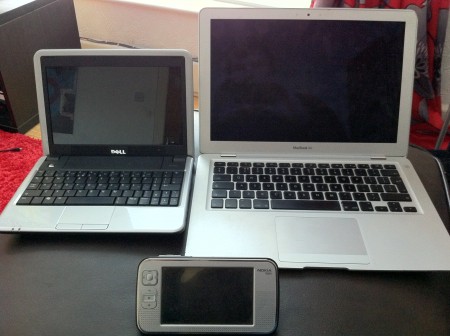There’s been a lot of discussion regarding the benefits of Project KELVIN, a €30M investment in Northern Irelands telecommunications infrastructure. The issue is that when questions were asked, answers were not forthcoming. David Kirk, ex-AOL, ex-Cisco, steps in with some clarity. Let’s Get a Few Facts Right …, by David Kirk. In November, Matrix published … Continue reading “KELVIN: A Guest Post”
There’s been a lot of discussion regarding the benefits of Project KELVIN, a €30M investment in Northern Irelands telecommunications infrastructure. The issue is that when questions were asked, answers were not forthcoming. David Kirk, ex-AOL, ex-Cisco, steps in with some clarity.
Let’s Get a Few Facts Right …, by David Kirk.
In November, Matrix published “Telecoms Horizon Panel Report; Exploiting Northern Ireland’s Telecoms Infrastructure” claiming “international connectivity now gives us the distinction of being “closer” to the east coast of North America than California.”
Then on December 14th, in a piece by John Simpson in the Belfast Telegraph, an article on the report states
“The new Kelvin direct fibre link from Northern Ireland to the USA offers huge capacity, sufficient for 1 million concurrent 2Mbps users, and reduces the round trip time for contact with the USA from 120-150 milliseconds to 65-67 milliseconds. Operating in milliseconds is itself staggering.”
You’d get the impression from these claims that Kelvin just established Northern Ireland as the telecommunications gold medalist in the 2010 connectivity sprint. Unfortunately, the above statements are meaningless out of context – a fact that a number of telecommunications experts in Northern Ireland have been trying to tell the powers that be for 2-3 years now.
So, let’s step through this slowly.
But first, lest this article is written off as just another negative poke from another naysayer – there are LOTS of advantages to Kelvin, both strategic and tactical, but round trip latency IS JUST NOT ONE OF THEM.
And, I’ll keep this as simplified as possible to illustrate the point.
On a continuous run of fiber optical cable, data is transmitted as light pulses – and travels at the speed of – well – light. Long lengths of fiber optical cable need repeaters (passive repeaters) to get the light longer distances. This will slow the data down, but that’s not the major reason for delay. Two other network topology and routing considerations have vastly more significant delays on data transfer / throughput rates than round-trip delay – hubs and peering arrangements.
Round trip delay data, in this case, is the time to transmit from a Hibernia node, to another Hibernia node. This has NOTHING to do with the actual delay, transfer rate or throughput that an actual user may experience. The REAL impact of data transfer / throughput will depend on the “last mile”, i.e. what connectivity any user has to its ISP and which other ISP’s are peered.
For example, I am on Time Warner Cable in Palm Springs. To send an email to my neighbor who is on Comcast means that my data has to travel to the nearest peer exchange where Time Warner and Comcast have a peering arrangement, i.e. agreed to allow data to travel over each other’s networks (reciprocity).
Basically, it is impossible to predict generic data transfer / throughput rates from backbone round time delay, and making non-sense statements like “closer” just illustrates that the folks making these claims either know how facile the arguments are, or simply just don’t have a clue about networks and data transfer / throughput rates. A simple challenge to this claim would be to ask for the end-to-end transfer / throughput benchmarks.
By way of analogies:
- Basing claims on round trip delay is like saying that a car’s speed is only dependant upon the revs of its engine. A Porsche would be delivering around 400hp and in 3rd to 4th would be doing 100mph and a Prius can only deliver 100hp for a top speed of, maybe 95 mph.
- A slower (in terms of processor cycle speed) PC will print faster on a printer connected to a USB 3.0 connections, in comparison to a faster PC printing to the same printer but connected via USB 1.0.
To make these claims that are being thrown about will incur laughter from knowledgeable network engineers and discredit the REAL benefits and advantages of Kelvin. Perhaps the folks that are pumping out these claims should be listening to the folks that understand?

